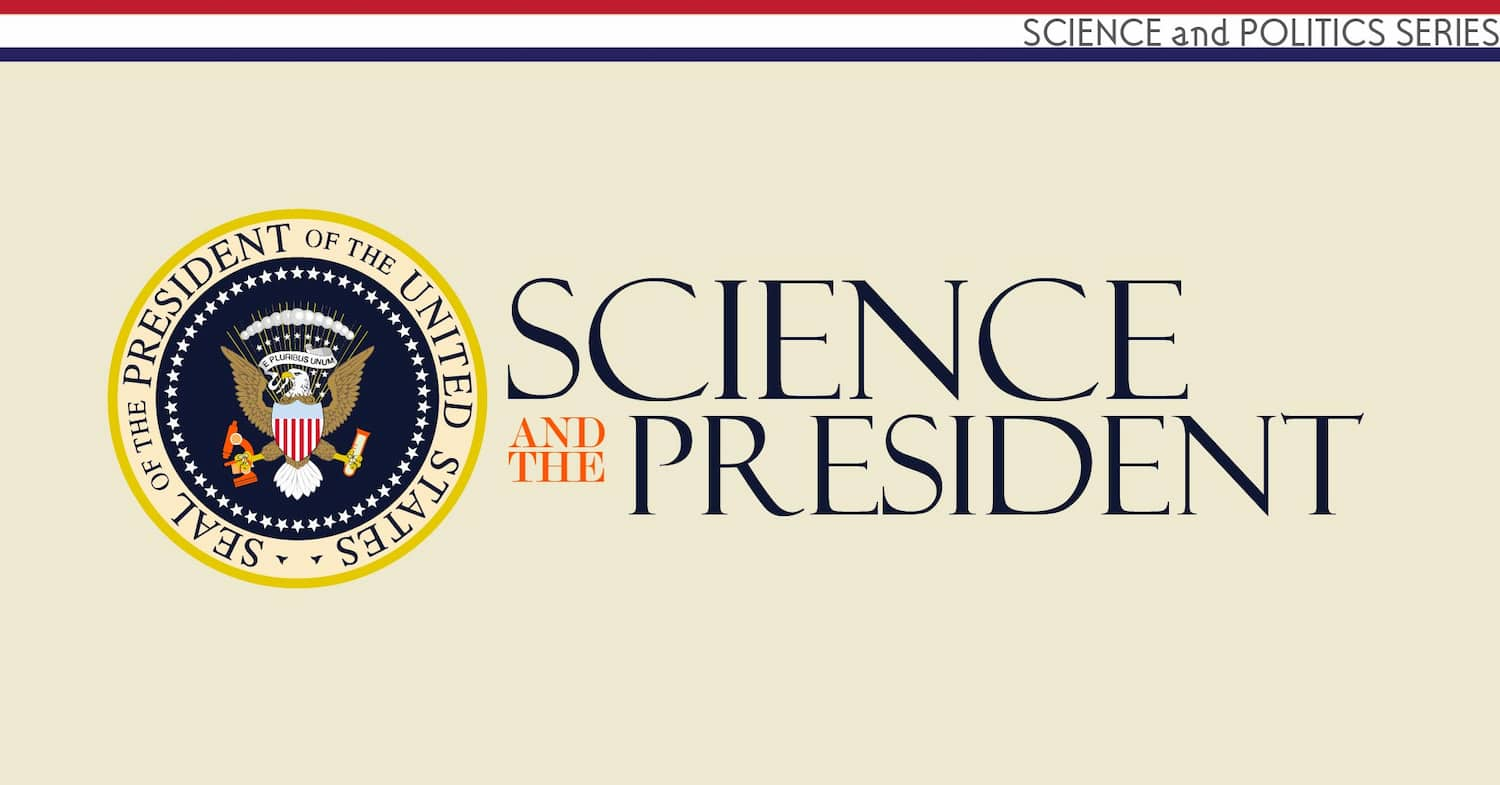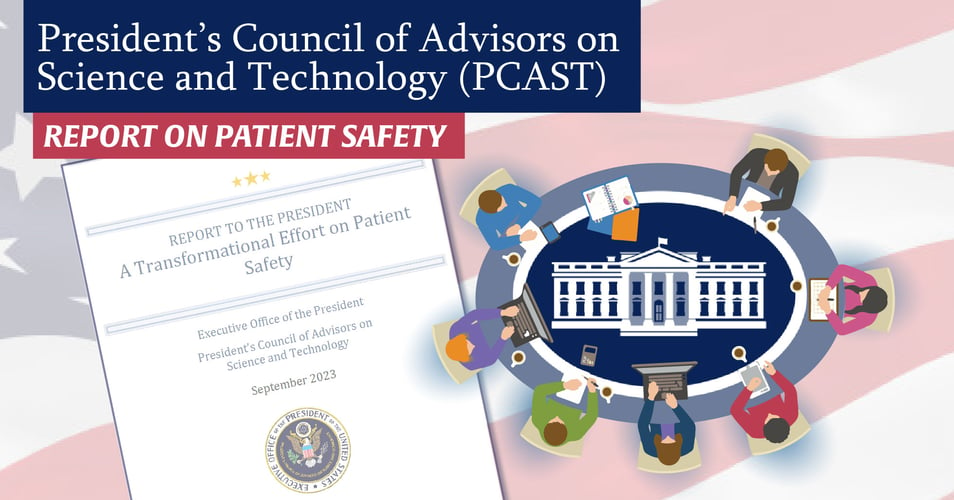
 Our previous post began a series exploring the role of American presidents and the advancement of science, beginning with our Founding Fathers. Today we continue this discussion with examples of how presidents and science have interacted over the history of our nation. We discovered that the presidential role in science, while sometimes simply as leader or visionary, more often takes the role of facilitator - and most importantly, but modeling an acceptance of scientific authority for the nation. Let’s look at the events that bring us to this conclusion.
Our previous post began a series exploring the role of American presidents and the advancement of science, beginning with our Founding Fathers. Today we continue this discussion with examples of how presidents and science have interacted over the history of our nation. We discovered that the presidential role in science, while sometimes simply as leader or visionary, more often takes the role of facilitator - and most importantly, but modeling an acceptance of scientific authority for the nation. Let’s look at the events that bring us to this conclusion.
As we explored before, science was a priority for the men who formed our nation’s guiding document, the Constitution. By writing into it the responsibility of the government, through Congress, to “promote the Progress of Science and useful Arts” and to “fix the Standard of Weights and Measures,” the Founding Fathers lay the foundation for what would become the many science-focused agencies that work for our nation’s benefit today. But what role is left for the President alone?
The way the Constitution is designed, the President is the Commander-in-Chief of the branches of the military, the chief diplomat in foreign affairs, and to Congress, an advisor. The only way a President can solely execute a specific policy is through an Executive Order. Over the hundreds of years of the United States, only a handful of Executive Orders have directly concerned science.
1902 | Theodore Roosevelt | Set apart land to use for experimental tree planting
1916 | Woodrow Wilson | Establishment of National Research Council
1933 | Theodore Roosevelt | Establishment of Science Advisory Board
1970 | Richard Nixon | Established the Environmental Protection Agency
1990 | George H. W. Bush | Established the President’s Council of Advisors on Science and Technology
1992 | George H. W. Bush | Directed government agencies involved in science to actively help education outreach
2015 | Barack Obama | Requires government agencies use evidence-based behavioral science to inform policies
Overall, not too long of a list. Surely American Presidents have more impact on science than this? The answer is that they do, to a certain extent, but mostly by signing a bill after it has been promoted and voted upon by Congress. And this is where Presidents have the ability to shape science policy: By working with Congress to put forward these policies and get the votes required for them to pass. A big part of that influence is just by promoting the acceptance of the scientific method and scientific authority.
There are certain Presidents who stand out as being especially supportive of science, helping usher in milestone policies that support today’s scientific progress. Here is a list of these “Science Presidents,” leaders who used scientific principles to inform policy.
George Washington | 1789 - 1797 | During his presidency, Washington continued to value science as he did in his life before assuming this leadership role. However, it was as Commander in Chief during the American Revolution that he used science to save lives. Despite naysayers, he was a huge supporter of inoculating soldiers against smallpox during their recruitment, a decision that may have been a deciding factor in our winning our independence.
Thomas Jefferson | 1801 – 1809 | The consummate Renaissance man, Jefferson ensured that science and discovery would become a national priority. By commissioning the Lewis and Clark Expedition, he not only opened up a new frontier for settlement, he established American paleontology, collecting fossils from all over the explored territories.
Abraham Lincoln | 1861 – 1865 | He signed the law creating the National Academy of Sciences and the Department of Agriculture, two agencies that are still responsible for significant scientific breakthroughs today.
Theodore Roosevelt | 1901 - 1909 | He did more than just advocate for the planting of trees. Roosevelt is recognized as establishing land and water conservation as a national priority, establishing the first national forests, today’s National Park Service. Roosevelt also pressured Congress to approve laws that ensure that foods and medicines are safe, with accurate labels, to protect consumers.
Dwight D. Eisenhower | 1953 – 1961 | Eisenhower presided over a nation entering the digital age, a future made possible in part by his role in establishing the Defense Advanced Research Projects Agency (DARPA). Research from this agency made this post possible – it laid the foundation for the creation of the Internet! He also publicly proclaimed his support of the polio vaccine, support that instilled confidence in US citizens and led to the eradication of the disease in our nation.
John F. Kennedy | 1961 – 1963 | Kennedy will forever be remembered as giving the nation a vision of “landing a man on the moon and returning him safely to the earth.” His scientific legacy, however, also includes safer nuclear testing and improvements to health care based on evidence, not just theory.
Richard Nixon | 1969 – 1974 | Nixon tackled pollution head-on by establishing the Environmental Protection Agency (EPA) and the National Oceanic and Atmospheric Administration (NOAA) as well as by signing the Clean Air Act into law. By working with Congress, he also passed the Endangered Species Act, which still protects thousands of animals today. Protecting the environment and endangered species was then, as they are now, hot-button topics, making these milestones even more important.
Jimmy Carter | 1977-1981 | Carter established the Department of Energy during a national energy crisis, and emphasized the need to research alternative energy sources. He also authorized the newly-formed EPA to identify toxic waste sites needing cleanup. Despite pressures from the business sector, Carter set in place regulations that protected our citizens' health for future generations.
George H. W. Bush | 1989 – 1993 | Accepting the scientific world’s warnings about the growing hole in the Earth’s ozone layer, Bush successfully convinced Congress to pass a number of laws to require manufacturing plants to reduce toxic emissions and to ban chlorofluorocarbons. He also supported the use of satellites to monitor global environmental conditions.
While no President is able to single-handedly create initiatives to support and further science, his or her role in working with Congress and the American people to value science, scientific authority, and evidence cannot be underestimated. And when a scientific vision is the President’s priority, it becomes a priority for the nation.
Our next post will explore the way science and government interact the most: Funding.
![EOScu Logo - Dark - Outlined [07182023]-01](https://blog.eoscu.com/hubfs/Eoscu_June2024/Images/EOScu%20Logo%20-%20Dark%20-%20Outlined%20%5B07182023%5D-01.svg)




